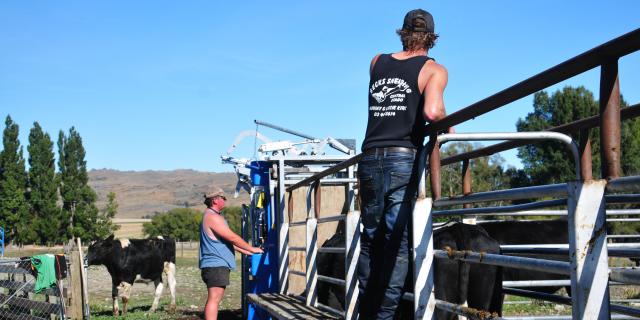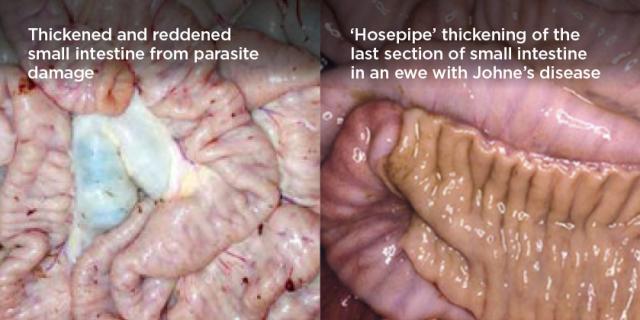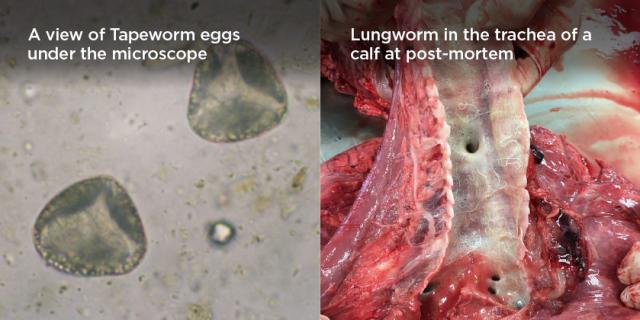Not all testing for worms involves handling poo! Here we discuss how animal performance and health checks can be used in worm monitoring. This includes things you can check after an animal has died.

Liveweight monitoring and targeted selective treatment (TST)
What is it?
-
Parasite infections in young animals can cause reduced appetite and reduced feed conversion efficiency.
-
Not all animals in a mob are affected to the same degree - some will be growing fine while others are not.
-
Liveweight gain (LWG) data of individual animals can be used as an indicator of drench responsiveness.
-
Animals falling below a pre-determined LWG (say 800g/day for cattle – but it can be whatever you want!) can be treated, and their better-growing mates left undrenched.
How do we know it works?
-
This approach has been shown to work both in New Zealand and overseas.
-
Large reductions in drench use (in the range of 50-70%) have been achieved with only minimal impact on overall mob growth performance.
-
In these studies, usually a set LWG cut-off has been chosen and adhered to throughout.
-
In real life, you can vary your liveweight gain cutoff up and down depending on feed conditions and other factors so that your animals hit their targets.
-
TST is very flexible – you can start whenever you’re confident to do so, and vary the proportion of animals left untreated to suit your system and risk preference.
-
Currently it is more common in cattle systems, but Beef + Lamb NZ are currently funding research into TST in lambs too - watch this space!
The FAMACHA system for diagnosis of Barber’s Pole worm
-
This system was developed in South Africa.
-
It is a way of assessing blood loss from Barber’s Pole worm in sheep by looking at the membranes around the eye.
-
This is much more accurate than trying to determine gum colour!
-
FAMACHA is an ideal diagnostic tool for small sheep mobs where there is enough labour to individually inspect each animal
-
By using FAMACHA, you can greatly reduce the number of whole – flock treatments given (for maintenance of refugia), especially where Barber’s Pole worm is prevalent for much of the year.
Download FAMACHA Eye Anemia System guide (PDF, 178KB).
Post mortems/total worm counts
-
Post-mortems are a useful tool to determine the role of parasites in cases of poor body condition and performance of adult stock, especially ewes.

Here’s some guidelines for what you’ll see with Barbers Pole worm and Trichostrongylus in lambs that have died of these parasites.
Total worm counts are the ultimate test to determine the level of immature and mature worm burden in animals.
They can also be used to investigate apparent cases of drench resistance in more detail and are sometimes used in investigating poor performance and ill thrift in ewes and lambs.
Blood tests
These would normally be done by a veterinarian or veterinary technician.
Pepsinogen is a blood test that can be used to assess the level of damage to the abomasum caused by worms (generally Ostertagia in cattle).
There is a blood test available for liver fluke.
